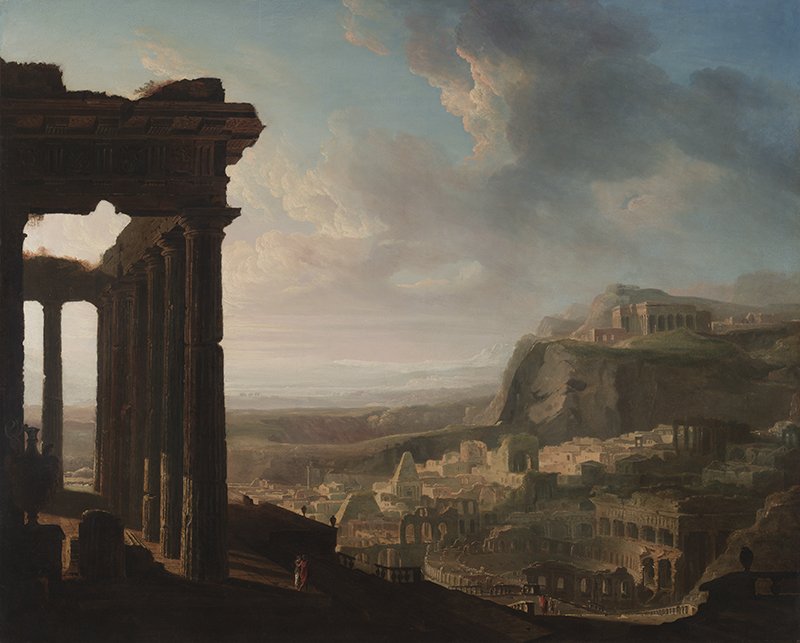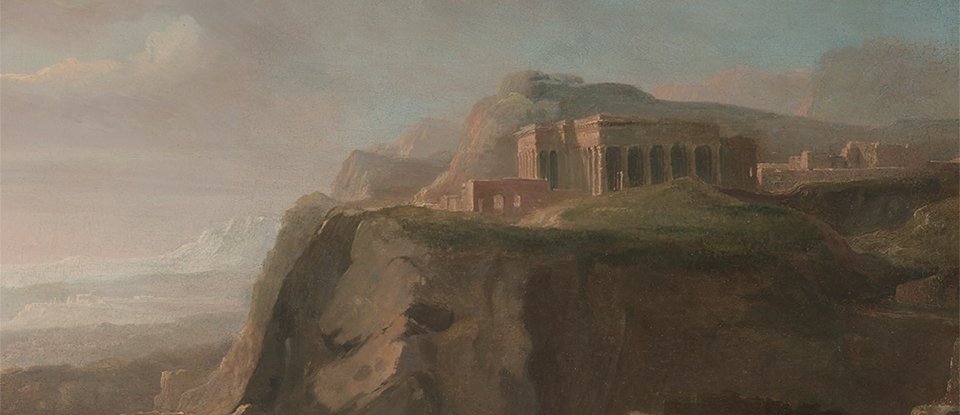Archaeology: Missing the Miraculous
Does denying miracles blind archaeologists to their finds?
C.S. Lewis defined a miracle as “an interference with Nature by supernatural power.”1 The Bible, of course, is replete with “ interferences” by the God of Scripture. We immediately think of events such as the creation of the universe out of nothing, the global flood, the parting of the Red Sea, the walls of Jericho collapsing, Lazarus being raised from the dead, and so on. Since the infinite God of creation is speaking in the Bible, we can have absolute confidence that his revelation is both trustworthy and true. There is no higher authority to whom we can appeal. But without a willingness to accept God’s Word as accurate and authoritative, people’s worldview will inevitably be skewed by their very limited and fallen perspective.
Over the last 150 years, the field of biblical archaeology has contributed greatly to our understanding of the Bible and its historical background. However, archaeological evidence uncovered in the ancient Near East has also been used in a variety of ways to discredit the reliability of miraculous biblical accounts. While archaeological and historical evidence cannot confirm miracles per se, archaeologists can altogether miss the significance of certain finds because their worldview rejects the supernatural.

Ruins of an Ancient City (1810) by English Romantic Painter John Martin
Destruction of Tyre
In the early sixth century BC, the prophet Ezekiel brought the Lord’s indictment against Tyre, a Phoenician seaport on the Mediterranean, famous for its beauty and wealth. Ezekiel chapters 26 and 28 contain predictions of coming judgment against the great city. Ezekiel 26:7 indicates that King Nebuchadnezzar of Babylon would attack and besiege Tyre. Skeptical scholars have often denied this attack ever happened, accusing Ezekiel of prophesying falsely. But according to scholar Paul Ferguson, tablets were discovered in the 1920s that documented provisions for Babylonian soldiers at Tyre and recorded that the Tyrian king was being held in Babylon two years after Nebuchadnezzar’s siege and that Babylonian governors were overseeing Tyre at that time. Moreover, there were two Tyres in the ancient world—the mainland city of Old Tyre and Tyre the seaport, located one third of a mile (.5 km) offshore. Nebuchadnezzar had attacked the mainland city but not the seaport. Thus, it is argued, Ezekiel was wrong because all of Tyre was not destroyed by Nebuchadnezzar.
When we look closer at the biblical text, we find the prophecy is nuanced. Ezekiel 26:3 reads, “Thus says the Lord God: Behold, I am against you, O Tyre, and will bring up many nations against you, as the sea brings up its waves.” Observe that multiple nations would come against Tyre, not just Nebuchadnezzar in verse 7. The nations would slowly batter Tyre over time as the raging seas relentlessly batter a coastline.

Destruction of Tyre (1840) by English Romantic Painter John Martin
Enter Alexander the Great. When Alexander arrived with his armies at Tyre in 332 BC, he asked for permission to perform sacrifices in the seaport city. The leaders refused but granted permission for sacrifices to take place in the mainland city since they considered both locations to be Tyre. Displeased, Alexander ordered his armies to obliterate mainland Tyre. They razed Tyre, then hurled the rubble into the Mediterranean Sea and used the city’s remains to build a massive causeway out to the seaport during a protracted seven-month siege. Thus Ezekiel 26:4 was fulfilled: “They shall destroy the walls of Tyre and break down her towers, and I will scrape her soil from her and make her a bare rock.” Alexander the Great, King Nebuchadnezzar, and others would serve as the “waves,” instruments in the hands of the sovereign Lord fulfilling all that Ezekiel miraculously predicted.2 Sadly, because many archaeologists and historians operate with a worldview that denies the validity of predictive prophecy, they overlook the significance of this remarkable archaeological and historical evidence.
Daniel’s Prophecy
We observe something quite similar with the book of Daniel. According to the Bible, Daniel wrote his book in Babylon in the sixth century BC. However, most scholars argue that the book of Daniel was written in Israel during the Maccabean revolt (ca. 168–164 BC) in response to the political turmoil caused by Antiochus Epiphanes. The primary reason critical scholars attempt to date Daniel to the second century BC is its historical accuracy.

Belshazzar’s Feast (1638) by the Dutch Golden Age Baroque Painter Rembrandt
According to many interpreters,3 Daniel’s vision in chapter 8 details the dominance and power of earthly kingdoms—the Medo-Persian, Greek, and even Roman empires (8:1–14, 20–26).4 The only way a sixth century BC Daniel could possibly have known about these future kingdoms is if the God of Scripture miraculously revealed the information to him.5 But since a secular worldview deems seeing the future impossible, scholars assume Daniel’s writings must have originated much later.
A great deal of archaeological evidence has confirmed that Daniel was written in a sixth century BC Babylonian context. The book indicates that Belshazzar was the last ruler of Babylon (Daniel 5:30–31). For centuries, historians (such as Berossus) believed the last ruler was Nabonidus; therefore, Daniel was mistaken. Several clay cylinders, discovered at both Sippar and Ur in the 1800s AD, demonstrated that Belshazzar’s father, Nabonidus, was away in semi-retirement, while his eldest son, Belshazzar, was running the empire as his co-regent.6
Until these modern discoveries, Daniel was the only historian from antiquity to accurately record this precise historical detail.7 He was an eyewitness to the inner workings of the king’s court. His elevation to “third ruler in the kingdom” (Daniel 5:16, 29) after interpreting the handwriting on the wall can only be explained by his personal knowledge of the political structure in Babylon. Nabonidus was the first, Belshazzar was the second, and Daniel was the third.
Eight manuscripts of Daniel were discovered among the Dead Sea Scrolls, and the oldest (4QDanc) is dated to the second century BC. Lawrence notes, “It is highly unlikely that the book of Daniel would have been accepted as Scripture by the Qumran community and copied along with other Old Testament books less than fifty years” after its original composition around 164 BC. The Aramaic vocabulary used in Daniel (2:4b–7:28) is decidedly earlier than the second century BC, and much of the wording was used prior to the fifth century BC. Vocabulary from both Akkadian and Persian languages has been detected in Daniel, all of which significantly predates the second century as well.9
Two centuries or so before Daniel, Hezekiah (who ruled from 716 to 687 BC) was facing a catastrophic crisis in Jerusalem. His nemesis, the Assyrian Empire, was the most powerful force in the ancient Near East (ANE). The Assyrians had spread across the ANE world in victorious wars of conquest. Shalmaneser V had recently decimated the northern kingdom of Israel (722 BC) during the reign of Hoshea and deported most of its population to Assyria (2 Kings 17:6). In Hezekiah’s day, Assyrian King Sennacherib had invaded Judah and destroyed its fortified cities (2 Kings 18:13; Isaiah 36:1–2) because Hezekiah refused to serve as his vassal (2 Kings 18:7). During the invasion, the Assyrians destroyed Lachish, the second most important city in Judah, in 701 BC. They sieged the city (2 Chronicles 32:9), and remnants of the siege ramp are still visible at Lachish today. The battle is depicted in the infamous Lachish reliefs, discovered in Sennacherib’s palace by A. H. Layard in the 1800s.
After destroying Lachish, the next stop for the Assyrian army was Jerusalem (which was then in Judah). We know this not only from the Bible’s depiction of events, but from the Annals of Sennacherib recorded on three clay prisms.10 In them, Sennacherib brags,
As for Hezekiah the Judahite who had not submitted to my yoke, I surrounded 46 of his strong walled towns, and innumerable small places around them, and conquered them by means of earth ramps and siege engines, attack by infantrymen, mining, breaching, and scaling. . . . He himself I shut up in Jerusalem, his royal city, like a bird in a cage. I put watch-posts around him, and made it impossible for anyone to go out of his city.11
Picture for a moment the dire nature of this situation. The most powerful army in the world is about to decimate your city and your people. The citizens will suffer the same fate as Israel, and the house of the Lord (the temple) will be plundered and destroyed. Hezekiah will certainly be put to death. Instead, as the king reaches the end of himself and his earthly power, Hezekiah sincerely prays to the Lord for deliverance. Isaiah provides the Lord’s response in 2 Kings 19.
The Assyrian records depict the conquest of Lachish, but inexplicably, do not report the inevitable conquest and destruction of Jerusalem. There is no logical explanation for Jerusalem’s miraculous escape from inevitable doom. No power on earth could have stopped the enormous Assyrian army. But then something beyond extraordinary happened, an astonishing miracle: “And that night the angel of the Lord went out and struck down 185,000 in the camp of the Assyrians. And when people arose early in the morning, behold, these were all dead bodies. Then Sennacherib king of Assyria departed and went home and lived at Nineveh” (2 Kings 19:35–36). Indeed, the Lord had answered Hezekiah’s prayer with a supernatural intervention of awesome deliverance and divine judgment. The Bible provides the miraculous answer to this conundrum, one which most archaeologists and historians are simply unwilling to accept.
Resurrection of Christ
For our last discovery, we will now turn our attention to the miracle of miracles: the physical, bodily resurrection of our Lord Jesus Christ. Can an archaeological discovery “prove” the resurrection of Christ? No, but there is a remarkable inscription that may very well point to it. The Nazareth Inscription12 is written in the Greek language on a 24x15-inch (60x38-cm) marble tablet.13 It is a decree of Caesar, often referred to as an imperial rescript (edict). Written during the reign of Claudius (AD 41–54), the decree imposes the death penalty for anyone caught robbing bodies from tombs “with wicked intent.” More specifically, the rescript targets “sepulcher sealing tombs,” the kind used throughout Israel in the first century, but not in the Roman Empire at large. Rarely, if ever, were bodies the targets of thievery. Instead, in antiquity, grave robbers commonly plundered tombs to steal the valuables. So why would Caesar need to make this specific pronouncement and attach the most drastic of penalties to it?
The New Testament records that the chief priests and the elders purposefully spread the lie that Jesus’ disciples had stolen his body from the tomb while the Roman guards were asleep (Matthew 28:13–15). Conversely, nothing could curtail the disciples from claiming that Jesus of Nazareth had been resurrected from the dead. The only logical explanation for their zeal and determination was that they had witnessed a genuinely resurrected Jesus, as the Gospels describe. Any conspiracy involving a stolen but dead body of Jesus would have fizzled out at the first sign of persecution and the threat of their own crucifixion.

Resurrection (1665) by the Late Baroque Period Italian Painter Luca Giordano
The gospel of Jesus subsequently spread like wildfire, and reports of the preaching about the resurrected Christ no doubt found their way to Rome and to the ears of the Roman emperor. He would have viewed the Christians as anti-Roman (Jesus was their King) and a threat to peace within the empire (think of the riot in Ephesus, mentioned in Acts 19:21–41). From Caesar’s perspective, the death penalty would serve as a sufficient deterrent and prevent any new resurrection legends from arising elsewhere in the empire. The “wicked intent” in the decree is the stealing of bodies from sealed sepulchers for the purpose of proclaiming a resurrection from the dead.
The inscription doesn’t prove the resurrection, but it provides corroborating archaeological evidence that Christians were declaring the resurrection of Jesus.
Despite recent claims to the contrary,14 the most plausible explanation for the decree against stealing bodies in the Nazareth Inscription is the apostolic proclamation of Christ’s resurrection. Bryan Windle concludes, “The inscription doesn’t prove the resurrection, but it provides corroborating archaeological evidence that Christians were declaring the resurrection of Jesus in the immediate years after his death.”15
Blinded by Worldview
Prior worldview commitments are quite often an immovable foundation upon which one’s entire career of research and publishing is based. As such, they can prevent archaeologists and historians from truly grasping the significance of paradigm altering evidence from the ancient world. This should not surprise us, since the Bible tells us that fallen people do not see the world rightly (Romans 1:18–21). Sin indeed blinds the sinner, so we call upon the Lord Jesus Christ and pray for him to open the hearts and spiritual eyes of those who study archaeology but miss its wonderful relationship to the Bible—a relationship that sometimes points to God’s glorious supernatural miracles.
Paintings on the Page
Not many modern artists set out to paint obscure ancient events like the destruction of Tyre. But many of the greatest painters and artists from the 1400s–1800s drew their inspiration from the historical accounts of the Bible. Their interpretations were influenced by the culture, symbolism, and presuppositions of their day just as the worldview of current archaeologists and scientists is influenced by factors of our own day. Even though the artists’ depictions likely don’t resemble the actual biblical events, it is a joy to observe the work of those who took the pages of Scripture literally as they put paint to canvas.
Answers Magazine
July–September 2022
God had saved human and animal life on the ark—but what came next?
Browse IssueFootnotes
- C. S. Lewis, Miracles (San Francisco: Harper, 2001), 5. One might quibble with Lewis’ conception of miracles in the particulars, but that goes beyond our purpose here. A precise and robust definition should come from Scripture, since it is God who not only performs mighty supernatural acts, but also fully controls the natural world where miracles take place. God is sovereign over the natural and the supernatural.
- For supporting sources and a detailed exposition of Ezekiel’s prophecy, see Paul Ferguson, “Ezekiel 26:1–14: A Proof Text for Inerrancy or Fallibility of the Old Testament?,” Bible and Spade 19.2 (Spring 2006): 48–58.
- Naturally, there are different interpretations of Daniel’s visions within conservative evangelicalism which we are unable to explore here. For one recent treatment, see J. Paul Tanner, Daniel, Evangelical Exegetical Commentary (Bellingham, WA: Lexham, 2020). For an exhaustive treatment of Daniel 9:24–27 and related texts, see Rick Lanser, “The Daniel 9:24–27 Project,” sponsored by Associates for Biblical Research, https://biblearchaeology.org/the-daniel-9-24-27-project-list.
- Kyle Butt, “The Prophecy of Daniel 8,” Bible and Spade 25, no. 3 (Summer 2012): 60–66; Alan R. Millard, “Daniel in Babylon: An Accurate Record?” in Do Historical Matters Matter to Faith?: A Critical Appraisal of Modern and Postmodern Approaches to Scripture, ed. James K. Hoffmeier and Dennis R. Magary (Wheaton, Ill: Crossway, 2012), 273–275.
- We should note that if the Roman empire is being described in Daniel 2:33, 40–43 (legs of iron, feet of iron and clay), then a ca. 164 BC date for Daniel’s authorship still does not resolve the problems for those who deny the validity of predictive prophecy. Rome’s date of ascension to empire status is generally regarded to be in the first century BC.
- The Persian Verse Account of Nabonidus provides additional information about father and son. For more, see Bryan Windle, “Three Babylonian Inscriptions About the Exile,” Bible Archaeology Report, March 22, 2019, https://biblearchaeologyreport.com/2019/03/22/three-babylonian-inscriptions-about-the-exile/.
- Millard, “Daniel in Babylon: An Accurate Record?” 279.
- Paul J. N. Lawrence, “Who Wrote Daniel?,” Bible and Spade 28, no. 1 (Winter 2015): 9; Gerhard F. Hasel, “New Light on the Book of Daniel from the Dead Sea Scrolls,” Bible and Spade 24, no. 2 (Spring 2011): 43–47. Hasel also observes, “The canonical acceptance of the book of Daniel at Qumran suggests an earlier origin of the book than the second century BC” (p. 47).
- Lawrence, “Who Wrote Daniel?” 9–10.
- Bryan Windle, “King Hezekiah: An Archaeological Biography,” Bible Archaeology Report, October 4, 2019, https://biblearchaeologyreport.com/2019/10/04/king-hezekiah-an-archaeological-biography/.
- A. R. Millard, “Sennacherib’s Attack on Hezekiah.” Tyndale Bulletin 36 (1985): 62.
- For the remarkable background story, see Kyle Harper, “The Emperor and the Empty Tomb: An Ancient Inscription, an Eccentric Scholar, and the Human Need to Touch the Past,” Los Angeles Review of Books, accessed December 18, 2018, https://lareviewofbooks.org/article/the-emperor-and-the-empty-tomb-an-ancient-inscription-an-eccentric-scholar-and-the-human-need-to-touch-the-past/.
- For a detailed study, see Clyde E. Billington, “The Nazareth Inscription: Proof of the Resurrection of Christ?,” Artifax, Spring 2020. Republished online at https://biblearchaeology.org/research/new-testament-era/4658-the-nazareth-inscription-proof-of-the-resurrection-of-christ. Also see Bryan Windle, “Scholar’s Chair Interview: Dr. Clyde Billington,” Bible Archaeology Report, March 19, 2021, https://biblearchaeologyreport.com/2021/03/19/scholars-chair-interview-dr-clyde-billington/.
- A recent scientific study of the marble from the Nazareth Inscription concluded the marble came from the Greek Island of Kos, and therefore the scientists concluded it has nothing to do with Jesus and the early Christian movement. See Kyle Harper, et al., “Establishing the Provenance of the Nazareth Inscription,” Journal of Archeological Science: Reports 30 (2020). For decisive refutations, see Bryan Windle, “Why Is Archaeology Important for Pastors?,” Bible and Spade, Spring/Summer 2021: 32–33; Tim Chaffey, “Nazareth Inscription Study Debunks Evidence for Christ’s Resurrection?,” Answers in Genesis, April 30, 2020, https://answersingenesis.org/jesus/nazareth-inscription-study-debunks-evidence-for-christs-resurrection/.
- “Why Is Archaeology Important for Pastors?” 33.

Answers in Genesis is an apologetics ministry, dedicated to helping Christians defend their faith and proclaim the good news of Jesus Christ.
- Customer Service 800.778.3390
- Available Monday–Friday | 9 AM–5 PM ET
- © 2025 Answers in Genesis



